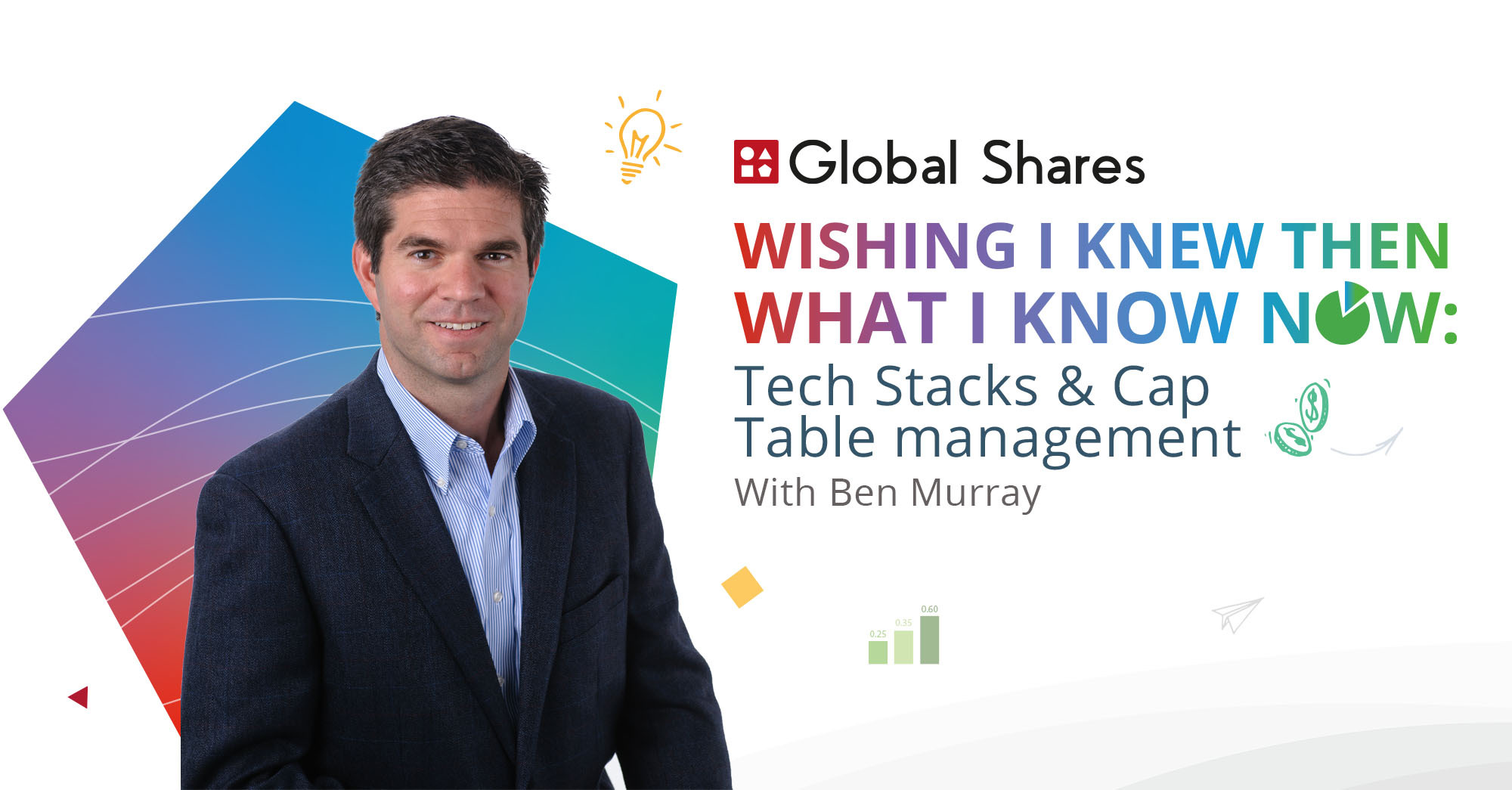“Second time founders definitely realize what they went through the first time and now, whether it’s accounting or equity compensation, they say ‘let’s set up that structure correctly in the beginning’. It saves you in the long run,” Ben Murray says of the insights he’s gained from his research into SaaS financial tech stacks.
It’s safe to say that no matter what type of business or industry you’re in you’ll have thought, at least once, ‘I wish I knew then what I know now’. It could be in the aftermath of a missed opportunity or the result of a decision that didn’t quite work out, leaving a costly hole that needs remedying. Ben has seen time and again; first time founders putting tasks on the long finger when establishing their initial company, but upon moving on they do learn from those experiences.
“Second time founders I find reach out to me earlier in the process, where they’re like, ‘I learned from selling my company or doing due diligence and I don’t want to do that again because it’s painful. We didn’t focus on finance and accounting early enough’. I’ve had some that reach out after a million or even less than a million in revenue, because they’ve been through it before and they’ll say ‘I want to get this right the first time now’.”
Tech stack survey
A CFO by trade Ben Murray, is a font of knowledge about all things SaaS operations related. Having worked in finance and accounting for over 25 years he launched his own firm to offer fractional CFO services, coaching and, of course, teach SaaS metrics and finance, which led him to begin compiling the Finance/Accounting Tech Stack Survey, which takes an in-depth look into tech stack software, from payment processing and revenue recognition, through to payroll and cap table management.
“A lot of questions from founders were the same,” Ben explains of what initially made him curious. “They were asking ‘what accounting software should we use, what about forecasting?’ So I said why not poll my audience? I have around 40,000 subscribers on my newsletter list, that’s where the tech stack report came from.”
Costly errors and avoidable mistakes
“Founders and co-founders starting a company are more focused on the product, first creating it, then seeing if they can sell and make money from it. It makes sense. You’ve got to develop the product, then you’ve got to see if the product will actually stick in the market” he says of how companies end up developing their tech stacks differently.
When getting a new business venture off the ground your tech stack might not be the most glamourous of jobs, but as momentum builds it becomes clear very quickly that certain tasks can’t be managed forever on spreadsheets, like your cap table for example. That information will be scrutinized as investors, both existing and potential, need to be satisfied everything is correct. The recommendation is to get away from spreadsheets sooner rather than later so finding the equity compensation software solution that’s correct for you is essential.
Just like revenue recognition, your cap table needs to be bulletproof. Your cap table and how you record all your ownership has to be perfect.
“Right to the penny, because you’re making entries to your accounting system based on what’s happening with ownership. If you’re issuing any shares or restricted stocks in your company that has to be perfect,“ he says. “It has to be done right from the beginning. It gets so messy if you get something wrong. Over time those errors accumulate, especially if you’ve got a lot of people on your cap table.”
From his own personal experience Ben’s found that having access to this information gives confidence and peace-of-mind. “I feel like they haven’t forgotten about me. I can log in to the cap table management software and see there I am, there’s the stock option plan, whatever it might be, versus a company that maybe you don’t even know who the CFO is or who to contact there because these were options that were issued for something, like where you were an advisor a couple of years ago and now that person is gone. So it’s good to be able to use the software.”
Spotting trends in the data
This is the second year that cap table software solutions has been featured in the report and already Ben has noticed trends forming, especially among companies that are operated by second-time onwards founders.
“We’re seeing cap table management software coming into companies that are less than a million in revenue, so you’re seeing more penetration in the space. Before it was later on, where you’re bootstrapped or you and your founders own 100% of the company and you think ‘we need to incentivize the employees or we need to make some big hires at the VP level’. Then it’s like ‘we need a plan, but we need some cap table software to manage that’. The trend I’m seeing now is people using solutions at smaller revenue sizes so it’s, I think, getting more attention now with founders. They realize the importance, that they have to have some thought behind the ownership and tracking it.”
Lessons learned from experience
The repercussions of not getting your tech stack set up correctly or putting it off to the point where errors begin to creep in can be quite costly and time-consuming to remedy, which is why learning lessons from past mistakes is vital.
“You could run out of cash. You could spend so much that you realise you’ve no cash left, or you could be missing out on growth or don’t know where to invest. Do you invest more in product, in sales, marketing or another side? If the accounting set up is a mess you’re not tracking the right data. Sometimes you have to go back and redo everything. It’s a mess and painful to have to go back in to try and find the right data.”
Having reviewed hundreds of SaaS P&Ls (profit and loss sheets) Ben says that most of them are set up incorrectly because of one simple error. “They don’t have the right accounting foundation in place to create the correct SaaS P&L. Accounting isn’t very sexy, but it’s so important to get it right. There’s so much information you get off a properly formatted SaaS P&L. You can see your revenue streams, your margins, your margins by revenue stream, your OPEX profile. A lot of that data flows into SaaS metrics. It starts with the accounting foundation and then the SaaS P&L.”
The P&L for a manufacturing company will be very different from a SaaS company’s P&L, so be aware there’s no one-size-fits-all solution, which is why you should to speak to the experts, to determine what’s the precise solution for your business.
“Setting up equity compensation and cap tables that’s a whole specific skillset and experience. You need the right people,” Ben agrees. “As they scale maybe the founder, or the 100% owner, they’ve been bootstrapped and now it’s growing nicely and they want to reward their employees. It’s a complex world and you’ve got to have that done right.”
Constant evolution
An interesting aspect the reports have revealed which Ben points out is seeing what areas of the market already have dominant players and which are still fragmented. “In payment processing where Stripe is so dominant, second place is so distant (but) in other categories there’s more of a battle for market share and to replace spreadsheets, especially in the forecasting budgeting arena. You see some categories with tons of solutions and tons of new competitors entering because it’s so fragmented.”
It will be interesting to watch and see how these dynamics change over time.
The tech stack itself is rapidly evolving as the information that companies want tracked has become more detailed and complex. An interesting trend that’s arisen out of the Covid-19 pandemic is the focus on project management software and closed management software solutions. Previously staff would have been in the office together so this wasn’t required as much, but now with people being more distributed Ben’s noticed a requirement for companies to better track and process information on tasks.
One thing is certain your tech stack needs to be recognized as the vital tool it is and set up accordingly.
At Global Shares we offer an equity compensation software solution that takes the pain out of managing your program. Employee Ownership, simplified – it’s what we do. So whether you’re a first, second or thirty-second time founder, get in touch to learn how we can help get you away from unreliable spreadsheets and put you in a better position for when next year’s Finance/Accounting Tech Stack Survey comes around.
This publication contains general information only and J.P. Morgan Workplace Solutions is not, through this article, issuing any advice, be it legal, financial, tax-related, business-related, professional or other. J.P. Morgan Workplace Solutions’ Insights is not a substitute for professional advice and should not be used as such. J.P. Morgan Workplace Solutions does not assume any liability for reliance on the information provided herein.



